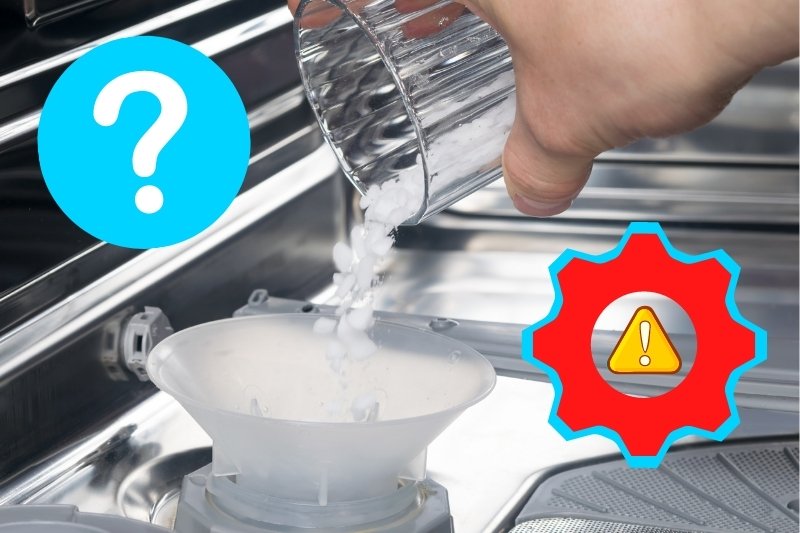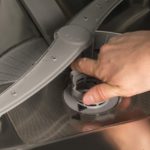Does it seem like you’ve only just replaced the salt in your dishwasher but somehow the light is already back on to tell you that it’s nearly empty? If this is happening to you it means that something may be wrong with your dishwasher!
Let’s take a deeper dive into the possible reasons that your dishwasher may be using too much salt and run through the solutions to swiftly put an end to this problem.
Potential Reasons Your Dishwashers Is Overusing Salt
If you live in a hard water area, then dishwasher salt is required to activate the machine’s water softener.
This water softener is designed to remove lime and magnesium from the water. If you stop adding dishwasher salt to your machine, then your water softener will eventually become saturated and will no longer work correctly.
The normal amount of time that should pass between each time that you fill your dishwasher with salt is around a month. If you notice a white residue on your dishes, or that the salt is disappearing more often then it’s likely that you may have one of the following issues:
1. Water inlet valve is stuck
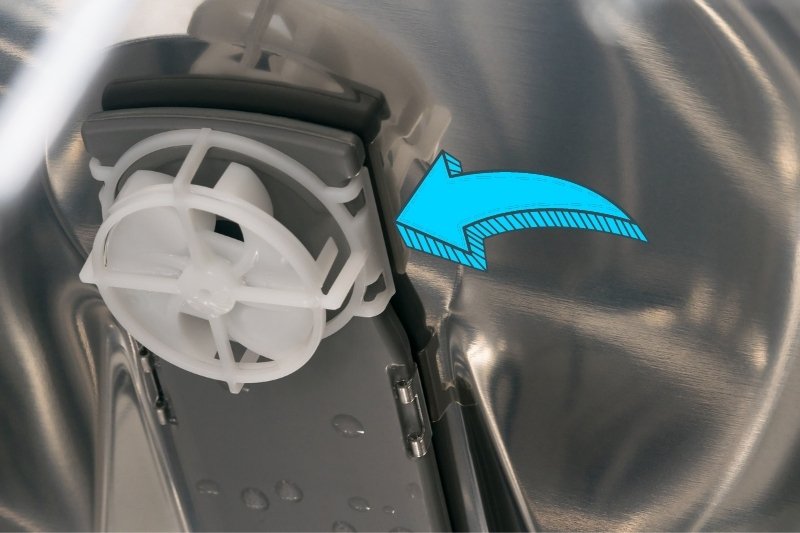
There is the possibility that your dishwasher’s water inlet valve is stuck in the open position. This issue is not too complicated to resolve as it can be easy and quick to replace the part, as well as relatively inexpensive.
If the solenoids that trigger the water inlet valve are not functioning properly then the valve can on occasion become wedged in an open position.
Solution
This valve is usually found on the bottom left-hand side of the machine in a plastic water jacket. If you feel that you require assistance with this process, there are various online tutorials for finding and fixing the valve, or you could call in a trusty dishwasher repair engineer.
2. Cover/cap is loose
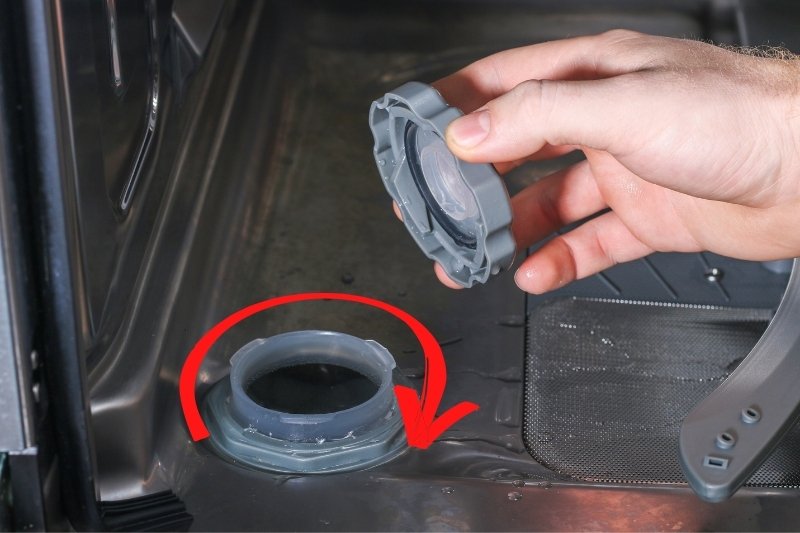
Another possible reason for your dishwasher releasing too much salt during the cycle is that the cap may be loose.
This can cause severe problems for your machine because the cap could come off completely during the washing cycle, allowing detergent to be released into the machine, which could cause it to break completely.
Solution
Always check that the cap is able to be screwed on tightly and is not remaining loose or wobbly. It would be an expensive endeavour to replace your entire dishwasher when you could have simply replaced the cap.
3. Seal has broken or worn away
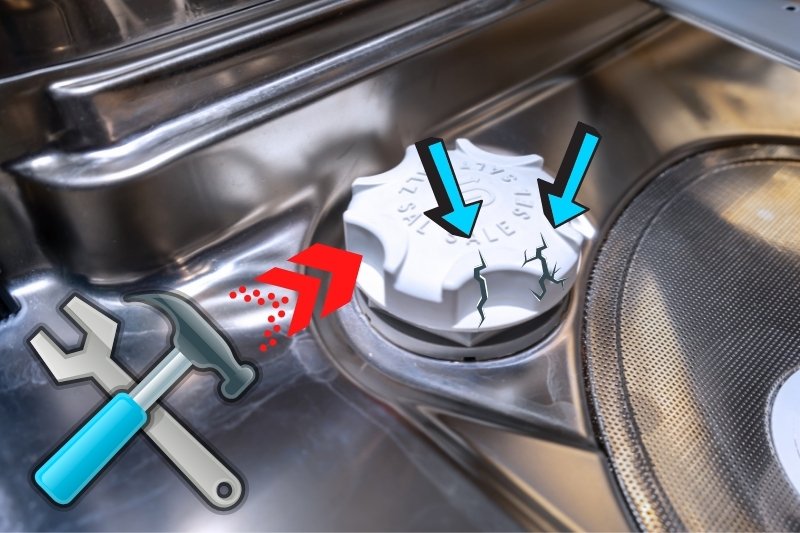
If you begin to notice that your dishes have a white residue or a salty taste after coming out of the dishwasher, then it is possible that the salt cap has broken, or the seal has worn away.
The first thing to do would be to check that the seal is still intact and if it fits correctly on the machine’s salt dispenser.
Solution
If you can see that the seal has perished, split, or is close to breaking, then it is likely that it will need to be replaced. You can attempt to replace the seal yourself using various online tutorials to guide you, or you can call your local dishwasher repair engineer to come in and assist you.
Conclusion
Dishwasher salt is a vital part of your dishes coming out of your machine in a clean and shiny state, especially if you are living in a hard water area. It’s possible to run your dishwasher without salt but it’s not advised unless you have tested the water in your household and are sure that it is soft.

An adventurous book lover with an animal obsession and a proclivity for travel and spontaneity. Used to passionately despise cleaning but has grown to enjoy it thanks to learning all the best tricks and shortcuts to guaranteeing a stress-free routine and a spotless home.
